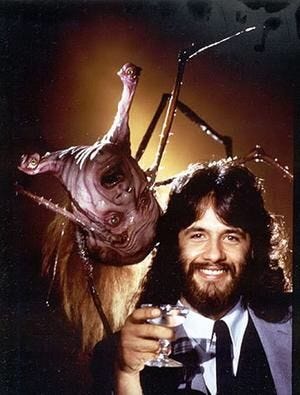Last week, we looked at the 1978 movie Halloween, directed by John Carpenter. This week, we look at another one of Carpenter’s classics from a few years prior: The Thing, which came out in 1982. It stars Kurt Russell among an incredibly talented cast, and though it was met with incredibly negative reviews at first, with time the movie became a cult classic and internationally famed for its suspenseful script and incredible practical effects. It inspired the creation of a prequel (also called The Thing) in 2011, and, along with merchandise and horror attractions, was turned into a video game in 2002. The film follows a group of scientists who, while staying in a research station in Antarctica, come across a terrifying alien with the ability to change its form to mimic any living creature– including the scientists themselves.
 This film was based off of the 1938 novel Who Goes There? by John Campbell, which tells the story of a group of individuals who become trapped in an Antarctic research station with a murderous, shapeshifting alien. Though there was another film made based off of the book– this one called The Thing from Another World, produced in 1951– it took several creative liberties with the plot, changing the style of the alien and the general theme of the story. Carpenter intended to make a movie that was almost exactly true to the plot of the original novel, and therefore The Thing was born.
This film was based off of the 1938 novel Who Goes There? by John Campbell, which tells the story of a group of individuals who become trapped in an Antarctic research station with a murderous, shapeshifting alien. Though there was another film made based off of the book– this one called The Thing from Another World, produced in 1951– it took several creative liberties with the plot, changing the style of the alien and the general theme of the story. Carpenter intended to make a movie that was almost exactly true to the plot of the original novel, and therefore The Thing was born.
Perhaps one of the most notable aspects of The Thing’s creation involves the practical effects, courtesy of special effects artist Rob Bottin. Creating a monster that can shapeshift into anything– and, in Bottin’s vision, has no one “true” form– was an extremely difficult undertaking, but Carpenter was determined to create a movie in which the monster wasn’t just “a guy in a suit.” Bottin worked for extensive periods of time in order to create different concepts for the monster’s appearance, as well as planning out some of the more difficult practical effects for scenes that are still remarkable today. In one famous scene, Dr. Cooper attempts to use a defibrillator on “Norris” (truly the Thing), whose chest breaks open into a mouth and rips off the doctor’s arms. In this scene, Carpenter hired a double amputee to sub in for the doctor, and attached arms– made of wax, gelatin and rubber to simulate bones, flesh and veins– that would then be torn off. Bottin created a fake torso, a prosthetic mask for the stunt actor, and hydraulic jaws for the Norris-Thing, altogether creating a truly unforgettable (and horrifying upon first watch) moment in the film. Unfortunately, his efforts did come with a price; though he allowed some puppets and prosthetics to be made by artists like Stan Winston, Bottin took on most of the workload alone, which resulted in him being hospitalized for exhaustion, pneumonia, and ulcers due to overextending himself. He even chose to live on set for extended periods of time, sleeping in locker rooms or on the film stage. However, despite this toll, his sheer determination to bring life to his vision resulted in incredible practical effects that are still recognized today for their horrifying ingenuity!
rubber to simulate bones, flesh and veins– that would then be torn off. Bottin created a fake torso, a prosthetic mask for the stunt actor, and hydraulic jaws for the Norris-Thing, altogether creating a truly unforgettable (and horrifying upon first watch) moment in the film. Unfortunately, his efforts did come with a price; though he allowed some puppets and prosthetics to be made by artists like Stan Winston, Bottin took on most of the workload alone, which resulted in him being hospitalized for exhaustion, pneumonia, and ulcers due to overextending himself. He even chose to live on set for extended periods of time, sleeping in locker rooms or on the film stage. However, despite this toll, his sheer determination to bring life to his vision resulted in incredible practical effects that are still recognized today for their horrifying ingenuity!
This film is absolutely fantastic, and I would give it a 10/10! The practical effects, though unbelievable at times from a modern lens, are truly remarkable for their time, and are what makes this movie really great. I’m also personally a huge fan of the suspense and paranoia that builds throughout the film; the concept of a monster that can look like and almost perfectly imitate anyone is an idea with massive potential, and Carpenter did a fantastic job bringing that concept to life in his film. I highly recommend a watch!